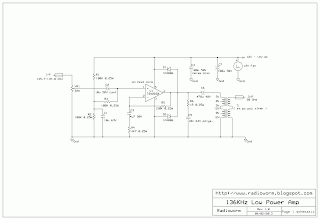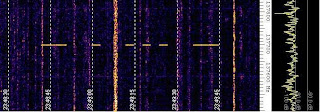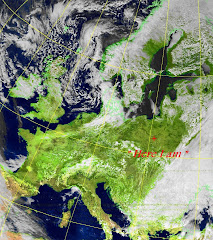I salvaged some potentially useful parts from a faulty pc power supply, e.g. bridge rectifier, schottky diodes, heatsink, fan, chokes, transformers. The 12V-0-12V, 5V-0-5V output transformer typically operates near 40KHz. I thought of using it for the output matching transformer in a low power transmit amplifier for the 136KHz, 2190m longwave band.
My design is based on the very cheap, ( half a $ ), TDA2030 class AB audio amplifier ic, which has a bandwidth of 140KHz.
The circuit is experimental. I was curious to find out if such an amplifier would be useful for 136KHz, despite using some untypical, possibly 'unsuitable', components.
I built the amplifier on a home-made printed circuit board, 70 x 100mm. The ex-pc transformer, ( yellow & black ), is on the left. The TDA2030 is mounted on the ex-pc heatsink. ( Pcb artwork and the circuit schematic are available from me on request ).
Fitting the circuit board inside the old pc power supply box, ( cover not shown ), with its original 12V fan, and adding a LED, rf and dc connectors, completed the construction.
For testing, I powered the amplifier from a +13.6Vdc power supply and connected the input to my frequency synthesiser tuned to 137.8KHz. With the input attenuation set to minimum, and the output terminated in a 50 Ohm load, the measured voltage gain was 41.75dB. Output power was 3.5W.
I could now either connect the amplifier directly to my longwave antenna and make some very low power test transmissions, or use it as an intermediate amplifier stage in a much more powerful transmitter, yet to be built.















